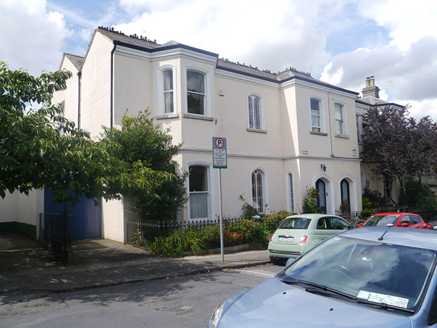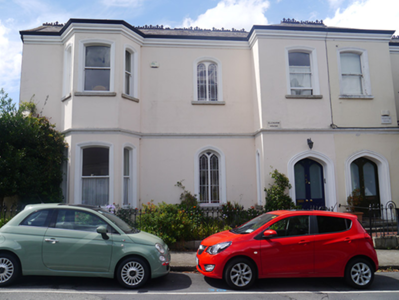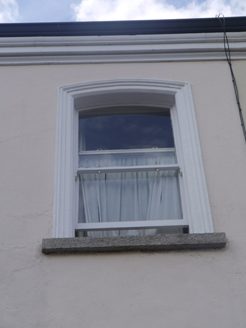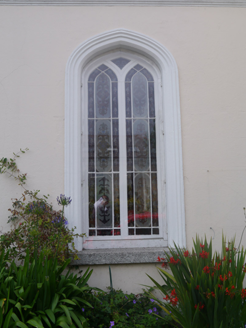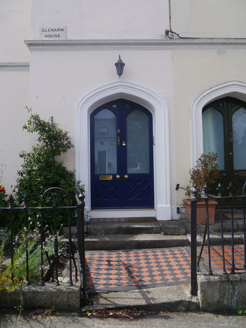Survey Data
Reg No
50130168
Rating
Regional
Categories of Special Interest
Architectural, Artistic
Original Use
House
In Use As
House
Date
1870 - 1880
Coordinates
316055, 236563
Date Recorded
23/07/2018
Date Updated
--/--/--
Description
Semi-detached three-bay two-storey house, built c. 1875, forming pair with adjoining house. Front (east) elevation has full-height canted-bay to south and full-height box-bay to north (attached to that of pair); single-storey extension to rear. M-profile pitched slate roof with crested black clay ridge tiles and masonry verges; ogee-profile metal rainwater goods supported on corniced stucco eaves; two rendered masonry chimneystacks to central valley and rear wall. Painted smooth-rendered walling, with painted masonry stringcourse between floors. Segmental-headed window openings to projecting bays, with one-over-one pane timber sliding sash windows; central bay has three-centred-arch window opening to ground floor and elliptical-headed opening to first floor, having timber bipartite stained-glass margin-lights; all windows having painted moulded stucco surrounds and granite sills. Three-centred-arch doorway to box-bay, with moulded stucco surround on plinth blocks, and double-leaf door having two pointed-arch glazed panels over quatrefoil lower panels and brass furniture; painted plaque with lettering 'Glenarm House' above door; accessed by three granite steps, and with red and black tiled path from street. Set back from road with front garden bounded by cast-iron railings, on granite plinth, with fleur-de-lys finials; vehicular entrance with timber double-leaf gate to south. Enclosed garden to rear.
Appraisal
An attractive mid-nineteenth-century semi-detached house, well-proportioned and having a stucco finish that distinguishes it from the general urban grain of the area in which red brick predominates. Although rather plainly detailed, the facade is enlivened by variations such as the projecting bays and window profiles, including the attractive stained-glass middle lights that have loose Gothic references. The house is enhanced by the retention of fine cast-iron railings and the original tiled garden path, and forms a gracious pairing with its neighbour. It is possible that the house contains fabric from a previous dwelling on the site, predating the laying out of Glenarm Avenue and shown on the first edition OS map of about 1843, and again on the second edition of about 1875, captioned 'Hollybank House'.
